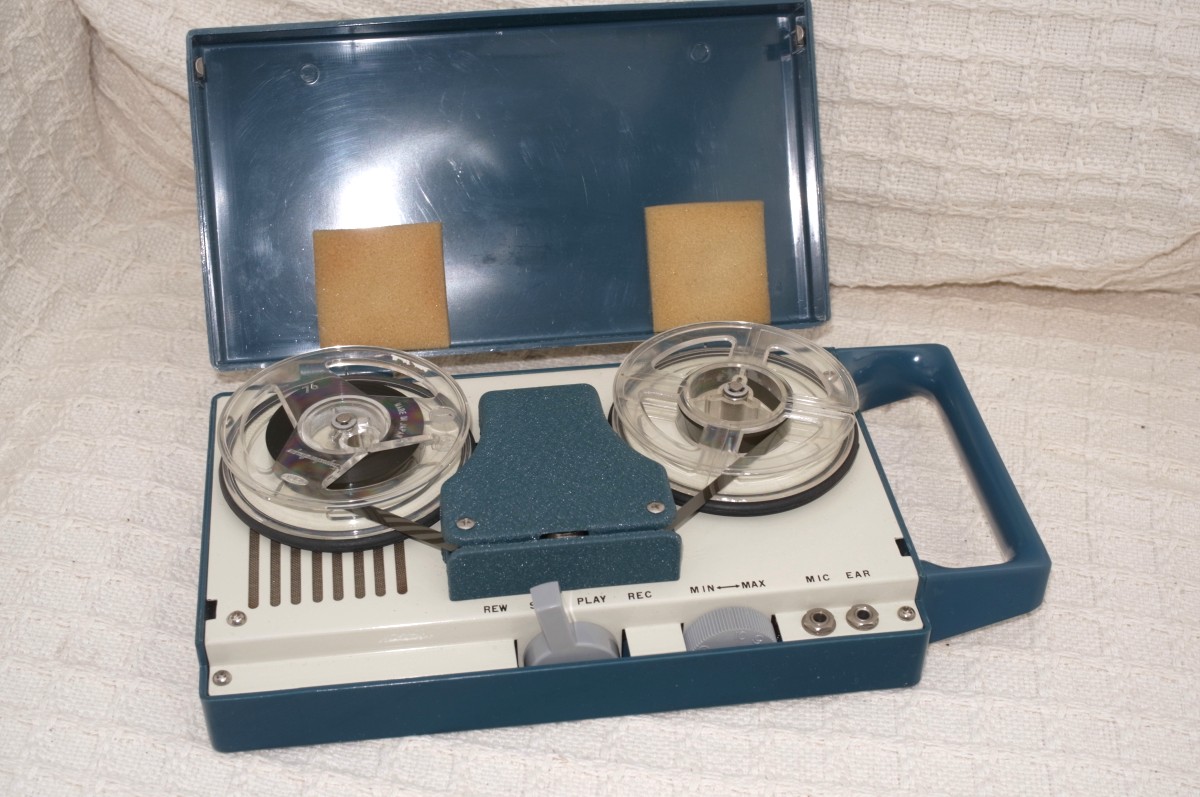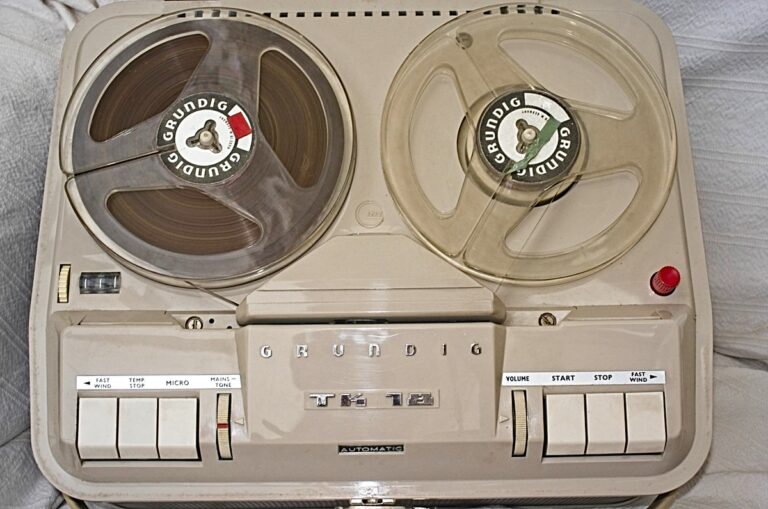The simple but unimpressive Junior Corder HIL-3 battery tape recorder
In the 1950s and ’60s the tape recorder was becoming a much more common family possession and many different models were starting to be produced. Because it was a popular item, small battery powered toy units became a common gift for children to receive for birthday and Christmas presents.
The unit featured here, the Junior Corder HIL-3, was probably made for just such a gift and was possibly some little boy or girl’s wonderful surprise some 50 or 60 years ago.
My Junior Corder HIL-3 Tape recorder
I bought this battery tape recorder from eBay a few months ago for nostalgic reasons. I used to own a battery tape recorder when I was about 12 years old, and although it wasn’t the same model as this, it reminded me of the unit I had.
There is a story attached to me having a tape recorder at that age; I was unlucky enough to be involved in a car accident when I was about 12 which left me permanently deaf in my right ear. At the time it happened I was in hospital for a number of days and my parents told me I could have a present once I was well and out of hospital. I remember asking for a chopper bike (which was all the rage in 1971) but that was actually difficult to get, so I settled on a battery tape recorder!
As I said above my unit was a bit different in terms of its look, but I would think the actual design was pretty similar to the tape recorder described here.
Pictures of the Junior Corder battery tape recorder













Description of the Junior Corder HIL-3 tape recorder
The Junior Corder tape recorder is an incredibly simple machine but seems to also be quite well engineered and manufactured for a child’s toy (by which I mean it is made of solid materials).
It is a portable machine which uses standard 1/4 inch tape in 3 inch reels and has a large carry handle on the side allowing it to be easily carried. In common with all tape recorders, the tape has two sides so once the user has recorded material on one side the reel can be removed, turned over and the other side used.
The unit is battery operated using two ‘C’ cells to power the tape drive motor and a single 9 volt battery for the electronics. It was supplied originally with a small crystal microphone and a crystal earpiece. My example has lost the microphone, but still has the earphone and was supplied with three small reels of tape.
The controls built into a panel to the front of the machine which remains visible and usable when the machine’s lid is closed. There are only two actual controls – a switch which allows the user to select Rewind, Stop, Play or Record and a volume control to set the recording level when recording and the volume level when playing.

Interestingly, although the volume control alters the recording level, there is no indicator on the tape recorder to show what level it should be set to. The only way to monitor is to plug in the earpiece and listen as the recording is being made.
The actual transport mechanism is driven by a small electric motor which drives the tape reels directly via a friction drive to the tape reel platter.
It is normal for tape recorders to have the tape pulled past the tape head via a pinch wheel and capstan in order to remove variations in tape speed which will result in what’s called ‘Wow and Flutter’. This toy machine doesn’t bother with any of that sophistication because it’s only intended for recording the human voice rather than music and so that sort of imperfection probably wouldn’t be noticed.
It is also normal for tape recorders to have an erase head which will remove any recording from the tape before a new recording is applied, but again in order to simplify the set, this recorder just uses a permanent magnet in that role. Similarly, the common practice of using a high frequency bias on the recording head to improve the frequency response and reduce distortion is replaced by a less common, but simpler DC bias system.
So overall although the tape recorder works and will record speech, it really is more of a toy than a real tape recorder.
Manual and circuit of the tape recorder
My copy of the tape recorder was supplied with its handbook, so I’ve included it here and in the manuals section of the site.
I’ve also made a separate scan of the circuit for the tape recorder and you can see that it’s a pretty simple arrangement with only three transistors which drive either the speaker / earphone, or the recording head.

Discover more from Everything Vintage
Subscribe to get the latest posts sent to your email.




